Toilet Found! is sustained by readers who made purchases through specific links on this site. Learn more
What Makes The Best Flushing Toilet Worth Your Money
Best Flushing Toilet Selection And Review
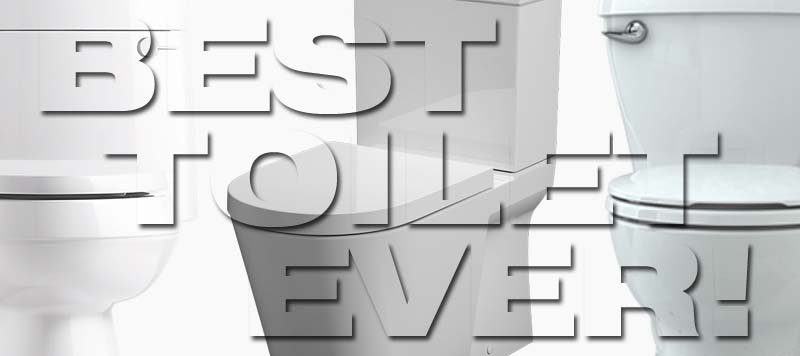
What’re The Criteria For The Best Flushing Toilet?
Alright, let’s face it. You are here because you are looking to buy a toilet that does what you expect it to do and within your budget. And in your opinion, the best toilets for the money must be of great quality and doesn’t cost more than you can chew.
Duh. Who doesn’t want that.
But do you know what makes a good toilet? The best one in this case. And how can you tell from the outside between a good toilet and a mediocre one? What are the best toilets to buy?
Asking all the right questions is one way to find out. But do you know what to ask? Or, if you are searching online for the best toilet to buy, do you know where to look?
Now it begins to daunt on you, you know you can’t trust the marketing hypes and most of the reviews you’ve read. No companies are going to tell you about the weakness of their products. And no reviews are truly unbiased. You are on your own, and hopefully, you are not trying to rely on your luck.
So, what to look for when buying a toilet? And yes, you do mean the best flushing toilet.
Let’s get you started. You will soon be able to spot a good toilet through the hypes and noises in the market place. And in no time you should be able to set your criteria and zero in to the best flushing toilet right within your budget.
NOTE: It’s a long post so please use the Table of Content and anchor for your easy browsing.
Great Flushing Power & Efficiency
This is the most important criterion of a best flushing toilet. You must agree that not all toilet flushes the same way and with the same efficiency.
But we only want those that give a strong flush, one that can move heavy loads in a single flush. One you need not have to look into the bowl to make sure nothing is ever left behind. Well, unless you have the addiction of watching a toilet flush. Then all the more you should get a good one at flushing.
So, without looking physically into the mechanics, how can you tell it’s going to be a strong one?
The answer lies in the diameter of the flush valve. The bigger it is, the stronger the flush will be. This is because a large flush valve diameter allows more water to flow out of the tank faster. That translates into a higher water flow rate.
With a high flow rate, it means a stronger push. A heavy load needs a strong push, isn’t it?
Simple enough? There’s more to it.
Power Needs A Sidekick
The strongest man in the world can’t move a stationary train without wheels. Likewise, a powerful water flow rate is useless without a great bowl design.
Once water flows out of the toilet tank, to maximize its power it needs to be channeled to make it even more powerful. So a good toilet bowl design will have this aspect carefully engineered.
Within the bowl, there are water channels that serve 2 purposes. One is, of course, to push waste out through the trapway, and two, to clean the bowl.
The bowl interior design varies from manufacturers. Some will have small holes lined along the bowl rim so water can flow down and rinse the bowl surface. And a main channel with its opening position opposite the bowl outlet. This main channel has the strongest flow, obviously its main function is to push the waste out of the bowl. And with the water flowing down from the rim holes, the force adds up to a powerful flush.
A clean flush is to clear the waste and clean the bowl all in a single flush. No waste, not even a tiny bit should be left behind. That’s what the best flushing toilet should do.
Now back to the flush valve diameter. The question you have is, exactly how big is big the flush valve diameter should be.
Flush Valve Diameter
 To determine a good flush valve size, there’s got to be a reference in place. The industry standard for a flush valve size is 2 inches. So a bigger than 2 inch diameter valve opening is desirable. But that’s only one side of the story, we’ll deal with the other side in a while.
To determine a good flush valve size, there’s got to be a reference in place. The industry standard for a flush valve size is 2 inches. So a bigger than 2 inch diameter valve opening is desirable. But that’s only one side of the story, we’ll deal with the other side in a while.
American Standard toilets have some of the biggest flush valve diameter in the market. For example, the Champion 4 toilet has a flush valve diameter of 4 inches. That’s twice the size of the industry norm.
Others range from a little over 2 inches up to 3 inches. In fact, most of the popular brand toilets are having a 3-inch flush valve as standard. So that makes it a little difficult to differentiate the best toilets from the average ones. Which is why you need to look beyond just the flush valve size.
Flapper Or Flapperless Flush Valve Design
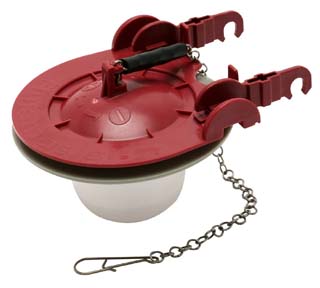 The most common flapper type is the hinged rubber flap that open and close the flush valve via a chain connected to the lever. Most toilets are still using this age-old flapper design and it works fine.
The most common flapper type is the hinged rubber flap that open and close the flush valve via a chain connected to the lever. Most toilets are still using this age-old flapper design and it works fine.
However, in recent years there has been some innovation to the old flapper design. The lack of it that is. Instead, a hollow cylindrical piston takes its place with the advantage of getting more water into the bowl faster.
 Commonly known as the tower or canister flush valve, it was first introduced by KOHLER. Trademarked as the AquaPiston Canister Flush Valve. It’s a flapper-less flush valve.
Commonly known as the tower or canister flush valve, it was first introduced by KOHLER. Trademarked as the AquaPiston Canister Flush Valve. It’s a flapper-less flush valve.
The valve is opened by lifting the tower vertically, letting water flow down the bowl in all directions without obstruction. And with a 3.25″ valve diameter, the flushing power is phenomenal.
If you are going for a KOHLER toilet, be sure to get one with the AquaPiston canister flush valve. You will love the promised clog-free flush.
Best Flushing Toilet With Canister Valve From KOHLER
Here are the 3 best selling KOHLER toilets with the AquaPiston Canister flush valve.
- KOHLER Comfort Height Elongated 1.28 gpf 2-piece Toilet with AquaPiston Flush Technology
- KOHLER Comfort Height Elongated 1.6 gpf 2-piece Toilet with AquaPiston Flush Technology
- KOHLER Comfort Height Elongated 1.6 gpf 1-piece Toilet with AquaPiston Flush Technology

Here Comes The Sidekick
So a large flush valve diameter is Batman. What is Robin then?
Well, Robin comes in the form of the waterways or water channel design in the bowl and the trapway.
We mentioned about bowl rinsing a moment ago. So the design of the waterway has to provide for a good rinse on the bowl. A good rinse is one that lets water flows from top to bottom covering the largest bowl surface area. And preferably with speed that seems like scouring to remove sticky waste and stains on the bowl surface.
So a good bowl design should have a water channel for bowl rinsing to remove waste that sticks to the bowl surface. And as mentioned before, different manufacturers design their waterways differently.
The two makers who have a very unique bowl design to achieve maximum rinse efficiency and flush power are TOTO and American Standard.
The famous Double Cyclone by TOTO and the Vormax Flush by American Standard.
These 2 flushing systems have at least one water channel with a large opening just below the bowl top. There are 2 in the case of TOTO’s Double Cyclone flushing system.

What makes them unique is the sweeping action they produce that literally sweep stains and stubborn waste down into the bowl outlet. They are not just wetting the bowl like those rim holes design seems to be.
And both designs have one thing in common, they are rimless. There’s no need for a rim with holes line along it, obviously. So that provides another benefit, there is no place for dirt to hide. Which means cleaning is so much easier with a rimless bowl.
Best Vortex Flush Toilets
Like the idea of the Double Cyclone or Vormax flush? Here are the best selling models from American Standard and TOTO.
- TOTO 2-piece toilet with Double Cyclone flushing system
- TOTO 1-piece toilet with Double Cyclone flushing system
- American Standard 2-piece toilet with Vormax flushing system
Glazed Bowl Surface
Another aspect of bowl design that helps to prevent stain on the bowl is a glazed bowl surface. Not only that, but a smoother bowl surface can also help with the water flow speed making the flush even stronger. Thus the bowl gets a better rinse.
The best flushing toilet should have at least a conventional glaze. Or go for a proprietary glaze, such as the EverClean Surface by American Standard and the CeFIONtect Finish (Previously known as SanaGloss) by TOTO.
To some users the difference between a conventional and proprietary glaze is insignificant. But the majority of the users do feel the difference in a cleaner bowl that stays clean longer.
Whether it’s EverClean surface or CeFIONtect glaze, you will find that it is so much easier to keep the toilet clean. Usually with just water is enough to wipe away dirt or stain, hardly the need to use a cleaning agent.

Rim Or No Rim?
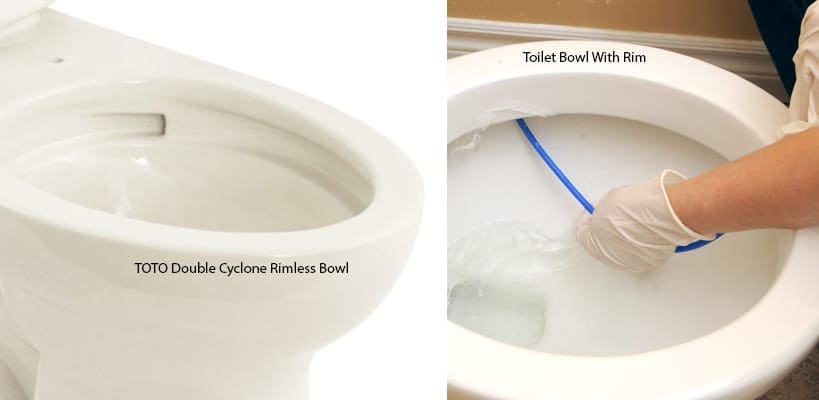
So whether it is the rim holes or the rimless design, the main purpose is for bowl rinsing. The more bowl surface area it covers the better. The question is, which is better at removing stains and stubborn waste.
The truth is, be it the Vormax or the Double Cyclone, they are not replacing the conventional rim holes design yet. So it’s a matter of preference, and the former still works just fine. And the bigger question is, which is easier to clean and maintain? Look at the image above again, you decide.
Don’t Forget The Waste. The Bulk Of It.
Yes. In the end, it’s about removing all waste and return a clean bowl for the next user. So the main water channel is key in removing all the waste in the bowl outlet.
The main water channel usually locates at the bottom of the bowl. And its opening is faced conveniently opposite the trapway outlet. With this arrangement, it is set to give the maximum push to clear the waste efficiently.
Then there’s the trapway which helps with “sucking” or pulling in the waste in the form of a siphon. Hence, the trapway diameter has to be carefully calculated to maximize the siphon force.
So you can see everything is well coordinated. A clean flush has to be fast and furious. And the criteria for that is a large flush valve for strong water pressure and the waterways to channel the power to clear the waste out of the bowl. Then the right size trapway takes over to siphon everything out to oblivion.
But there’s one very important factor that you shouldn’t ignore. It can break or make the best flushing toilet.
Batman will be another weakling without his muscles. And those muscles are the water in the tank and it has to be in the right volume.
Most of the best toilets out there, if not all, are either of 1.6 gpf or 1.28 gpf. It has been proven this 2 water volumes get you the cleanest flush among all for clearing solid waste.
Best Of Both Worlds Dual Flush Feature
So understanding how a good flush works are important when looking for the best flushing toilet. Now let’s move on to the other features that add to the awesomeness of those best toilets.
First off is the dual flush function that tops the list of great toilet features.

You can find the dual flush feature on both 1.6 gpf and 1.28 gpf toilet models.
The partial flush usually is 1 gpf or 0.9 gpf. You will see in the toilet specifications shown as “Water Consumption: 1.28 gpf / 0.9 gpf” or “1.6 gpf / 1.0 gpf”.
And if you like the idea of the cyclone or tornado flush, TOTO do have a few models with the dual flush. Unfortunately, American Standard only has the single flush for all its Vormax toilets.
Generally, a dual flush toilet cost more than the conventional single flush model. So are their replacement parts. It’s a good-to-have feature if you have a little extra for your budget.
American Standard has some of the best selling dual flush toilets that don’t cost you an arm or a leg to get. And, of course they come with great flushing power and bowl cleaning efficiency. (See recommendation below)
Is There Such A Thing As A Quiet Toilet?
Like what was discussed about the flush valve diameter, you need a reference to differentiate the good, the bad, and the ugly.
Unfortunately, there isn’t an industry standard for noise level of a toilet flush. What is quiet to you might sound like a space shuttle taking off to another. So it’s really hard to give a fair judgment.
Even the same toilet will sound differently (either louder or softer) when relocated. It’s the acoustic quality of the room that matters. The smaller the room, the harder it is to prevent sound from traveling out.
Some folks will attempt to soundproof their toilets, but it will never be 100% silent. And it shouldn’t be because that would mean the room is airtight. That will be very unhealthy for a toilet which needs good ventilation.
In an environment such as the bathroom or toilet, the air is damp. So you need to keep the room airy and well ventilated at all times. Otherwise when moisture build-up, it will promote mold and bacteria growth.
But if you really need a quiet flush toilet, you may want to look at this Rapid SL system by GROHE. Seemed like it’s the only toilet in the industry to have earned the Quiet Mark. It’s a carrier system for a wall hung toilet, so you will need a bowl to go with it. Get this TOTO Aquia bowl, highly recommended by users who have used it.
No Clogs
That will be nice of a toilet which doesn’t clog. But siphonic toilets are prone to clogs no matter what. It’s how frequent it gets plug, and that is largely due to the small trapway size and design.
The trapway size of a siphonic toilet can never be too large. The industry standard is 2 inches and it can’t go too crazy like 3 inches or more. In fact, not even 2-1/2 inch, the biggest you can get is 2-1/4″ with most of the leading toilet brands.
It’s easy to spot a siphonic toilet by its long S-shape trapway. The reason behind its long and winding shape is for creating the siphon during a flush. And its size is carefully calculated for timing accuracy to produce the optimum siphon power. If it’s too big or too small, a siphon won’t happen or it’ll be too weak to move any waste.
And for the best toilet, there should be a fully glazed trapway with the right bend angle to ensure the smoothest flow. Hence, to prevent clogs or significantly reduce the frequency of plugs.
Unless there is a breakthrough in flushing technology, this is the best engineering effort for a clog-free siphonic toilet. Every now and then you will still hear about clogs and blockages from the best siphonic toilet money can buy.
The best way to keep a toilet clog-free is to give it good care and proper use. Otherwise, the washdown toilet is your next best option.
Low Water Consumption
Saving water is not just a virtue. If you live in California, it’s life-saving.
Toilet manufacturers are racing to build toilets that consume the least amount of water. The lowest flushing capacity right now is 1.0 gpf and you can get it from all top 3 toilet makers in the United States. They are TOTO, American Standard, and KOHLER.
But the best performing toilets are still the 1.6 gpf and 1.28 gpf class.
It’s just a matter of time before other States follow California’s strict water usage rules. Especially for toilet flushing, currently, 1.28 gpf is the maximum capacity allowed in California. And eventually may become the national standard when it shows to have no impact on consumer satisfaction.
If you are keen on the 1.0 gpf toilets, here are the models from American Standard, TOTO, and KOHLER with decent reviews.
- TOTO 1.0 gpf Two-Piece Elongated Bowl Toilet with CeFIONtect Finish
- TOTO 1.0 gpf One-Piece Elongated Bowl Toilet with CeFIONtect Finish
- American Standard 1.1 gpf Two-Piece Siphonic Right Height Elongated Toilet
- American Standard 1.1 gpf Two-Piece Siphonic Regular Height Elongated Toilet
- KOHLER 1.0 gpf Two-Piece Comfort Height Elongated Bowl Toilet
They are not great but will still give you a decent flush. But don’t expect much of the bowl rinsing efficiency as the water volume may be a little stretch for that.
Better Option
 A better option is to get the dual flush 1.28 gpf models. You will be close to getting an average of 1.0 gpf and they are better in flushing and rinsing performance. And they usually carry the EPA WaterSense label which certifies that the toilets meet the water-saving criteria set by EPA.
A better option is to get the dual flush 1.28 gpf models. You will be close to getting an average of 1.0 gpf and they are better in flushing and rinsing performance. And they usually carry the EPA WaterSense label which certifies that the toilets meet the water-saving criteria set by EPA.
Here are the best selling 1.28 gpf dual flush toilets from American Standard.
- American Standard Siphonic Dual Flush 1.28/0.9 gpf Normal Height Two-Piece Elongated Toilet
- American Standard Siphonic Dual Flush 1.28/0.9 gpf Right Height Two-Piece Elongated Toilet
- American Standard Siphonic Dual Flush 1.28/0.9 gpf Normal Height Two-Piece Round Front Toilet
Easy To Clean And Maintain
“If I caught you again I’m going to make you clean the toilet.”
The warning alone pretty much sums up toilet cleaning is boring, tedious, and never fun. Thus it becomes a form of punishment because people just hate to clean toilets.
But not all toilets make a good punishment option. So before you mete out any punishment, do consider the toilet types.
Two-Piece Toilet With Exposed Trapway
 The most cruel toilet-cleaning punishment would be a toilet that look like this.
The most cruel toilet-cleaning punishment would be a toilet that look like this.
There are many areas to clean on a two-piece toilet with an exposed trapway. In particular, the joint part between the tank and the bowl. You will need to remove the tank if you want to get rid of dirt and mold that are hidden deep in the joint.
And the exposed trapway has way too many nooks and crevices to clean. Especially when the space is narrow, and you need to stoop down to reach the back part of the trapway. You will go crazy if all the toilets in the house are like that.
One-Piece Toilet With Exposed Trapway
 But this one looks like an easier clean. At least there isn’t a tank-bowl joint you need to take care of. Besides that, there is no risk of water leaking out of the tank to mess up your wood flooring.
But this one looks like an easier clean. At least there isn’t a tank-bowl joint you need to take care of. Besides that, there is no risk of water leaking out of the tank to mess up your wood flooring.
One-piece toilet is easier to clean and they look much better than the 2-piece. Don’t you think so? But still, the exposed trapway is a pain in the rear to clean.
You can read more in this comparison of One-Piece vs Two-Piece toilets.
They are more expensive than the two-piece toilet. Not because they look good, they are just more expensive to produce. And please don’t break any part of the porcelain, or that would mean replacing the whole toilet.
One-Piece Toilet With Concealed Trapway
 This is so much better with all the flat surfaces and no joint. Cleaning is no punishment with a toilet like this.
This is so much better with all the flat surfaces and no joint. Cleaning is no punishment with a toilet like this.
Just place a one-piece and skirted toilet in any bathroom layout, it will always be an eye candy. It’s not only good to look at, but it’s also super easy to clean and maintain.
However, please be extra careful with the porcelain. It can cost more than a two-piece and a normal one-piece toilet combine.
So is it going to end all punishment with this super cool looking toilet? Not till you see the next one.
Wall Hung Toilet – The Easiest Clean
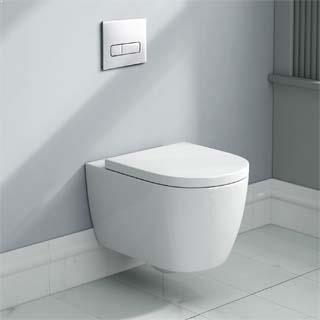 Wait….this one is no punishment, it looks more like a reward. You will throw in the floor cleaning as bonus, right?
Wait….this one is no punishment, it looks more like a reward. You will throw in the floor cleaning as bonus, right?
Wall hung toilets are the easiest to clean. They have the least surface area and literary no hidden surfaces that you can’t reach. But what you see is only the bowl. The whole system will include the carrier and water tank which are hidden behind wall.
Folks who own it will only have good things to say about this floating toilet. If you are planning for a new bathroom, do consider to have one installed. You will love it.
Here’s a TOTO wall hung toilet review. You will find out why this will end your hunt for the best flushing toilet.
MaP Score For Flush Performance
If the flushing part confuses the daylight out of you, an easier way to tell a powerful flush is the MaP rating.
MaP stands for Maximum Performance testing. It’s the industry standard for flushing performance of toilets.
Basically, it’s a rating that rates how well a toilet performs solid waste removal. The rating is obtained through a flush test carried out in a lab.
The test uses soybean paste to emulate human waste and together with toilet paper as test materials. According to MaP, soybean paste has similar physical properties as human waste in density and moisture level. So you can probably imagine how the test is performed in the lab.
Calibrated weight of the test media is progressively loaded into the toilet bowl in 50g increments. They will keep adding the test materials until the toilet failed to completely clear the bowl in two of three attempts.
The last loading weight that was successfully cleared sets the MaP rating for the toilet. The maximum load is 1000g, which is the best flushing performance.
So if you see a MaP rating of 1000, it simply means the toilet is capable of clearing 1000g of waste in a single flush. Or MaP 800 means the toilet can clear a maximum 800g of bulk waste. Any rating that is 250g and below, it is not an acceptable flush performance. The higher the number is, the better. You get the idea.
Recommended MaP Rating
Here’s a MaP Scoring Guide that shows the 4 flushing performance classes.

The Highly Recommended class (600 to 1000g) is, of course, the best rating you can expect. But not all toilets will have the MaP rating. It all depends if the manufacturer submits the respective toilet models to MaP for test and certification.
Most of the well-known brands will have a MaP rating on their toilets. You can do a MaP search to check if a particular toilet model has the MaP certification and with what rating.
Everything you need to know about MaP is here.
Comfort Height Or Regular Height
Some folks hate it, but some swear by it. It has a lot to do with your physical height.
People who are tall will love a comfort height toilet because they won’t have to bend their knees too much sitting down. So are those who have bad knees, especially the elderly folks. And those who suffered leg injuries, this is God’s gift. It just makes sitting down and getting up thankfully easier.
 But if you find your feet barely touching the floor when seated, then a comfort height toilet is not right for you. You will have two options, either get a regular height toilet or a Squatty Potty.
But if you find your feet barely touching the floor when seated, then a comfort height toilet is not right for you. You will have two options, either get a regular height toilet or a Squatty Potty.
Comfort height begins at 17″ right up to 19″, measured from the floor to the top of the toilet seat. And it has a few other names which basically mean the same thing.
American Standard calls it the Right Height toilet. TOTO says it should be a Universal Height toilet. Only KOHLER has it as the Comfort Height toilet. Others call it…..whatever.
You just need to know the range, 17″ to 19″. Which also happens to be an ADA compliant height. But that’s no coincidence, a large part of it is just marketing hypes.
So right height or not, you decide. Even if it means it’s below the minimum 17″. Your comfort is more important than the terms or names that try to dictate it.
ADA stands for “Americans with Disabilities Act”. You can read more about the act here (look out for clause 604.4).
Round Bowl Or Elongated Bowl

This is probably the least important of all features you have read so far. But still, it can dictate your toileting experience if you chose the wrong bowl shape.
It’s not just a personal preference, it has everything to do with the “front end” side of things. From saving that few inches of space at the front for more legroom to your genital.
Most men hate to use a round bowl toilet. They just hate having a part of their body touching the inside bowl surface. Some say it’s designed mainly for women. Well, probably.
But when you need to shave that 2 or 3 inches on the length (of the toilet), it’s a viable option. Hence, the round front toilet is often referred to as a compact toilet. It can save some front-to-back space for sure.
Other than that disadvantage for men, there is no difference in performance. Some of the best flushing toilets are of the round bowl or round front type.
While you have a choice, always go for the elongated bowl toilet. Give it a thought for the sake of the guys in the house.
Rough-In Or Rough It Out
There are only 3 rough-in sizes – 10″, 12″ and 14″. Out of the 3, the most common size is 12 inches. And you should always go for the 12″ rough-in when you are planning for your new bathroom or washroom. You will then have the widest range of toilets to choose from.
All toilet manufacturers will have the common 12″ rough-in for all their toilets. Only a handful of models are designed for 10″ and 14″ rough-in. And most of the best flushing toilets, if not all, are 12″ rough-in.
And in case you are not having the standard 12-inch rough-in, don’t be disappointed that you can’t acquire the desired toilet. There is a workaround. You can use an offset flange to adapt. It works with both 10-inch and 14-inch rough-in.
So, you can still go for the 12-inch models but please discuss with your plumber about the non-standard rough-in. They will know what to do with an offset flange.
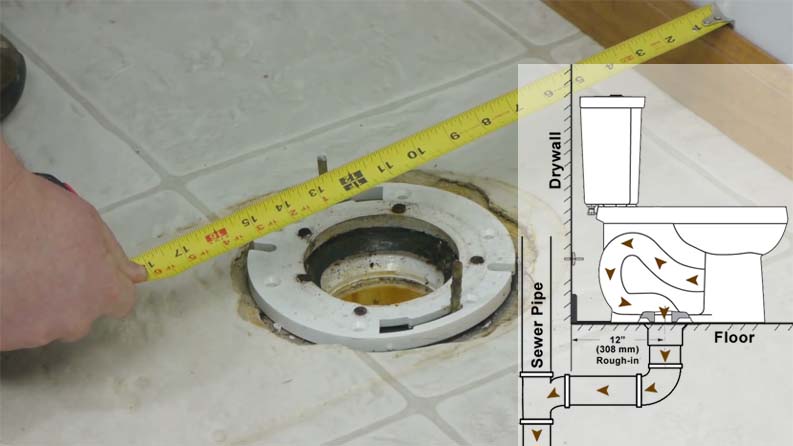
Easy To Get Replacement Parts
The best flushing toilet is always a popular toilet with lots of people owning it. And that simply translates into good economy of scale for a sustainable and lucrative replacement parts market.
Parts like the flush valve, flapper, fill valve, rubber seals and even the lever are consumable parts. They are subject to the usual wear and tear from daily use. So it makes perfect commercial sense to mass produce and makes these parts easily available to consumers.
So whether you are getting original parts or the alternatives, you will be spoiled for choice. The market for toilet replacement parts is so big, it has brought about some of the best toilet parts and accessories manufacturers.
Companies like Korky and Fluidmaster makes some of the best quality toilet parts for most of the best toilet models out there. And Bemis, known for its range of toilet seats, is a trusted alternative for a replacement seat under its flagship brands, Bemis and Mayfair.
If you can’t get the original parts, try Korky or Fluidmaster. In the case of toilet seats, Bemis will have you covered. It’s almost impossible for a situation where you can’t find any spare parts and accessories. So that’s the advantage of owning the best flushing toilet. You will never have to worry about replacement parts.
Space Saving Compact Toilets
Even when you don’t have the luxury of space, you can still find the best flushing toilet that is compact in size. And being small doesn’t mean it has to compromise on some features.
You can still find a 1.6 gpf or 1.28 gpf compact toilet that will fit into your small bathroom or cubicle. Not only that, but there’s also the dual flush feature with elongated bowl toilet. Comfort height, two-piece or one-piece, exposed or concealed trapway, you can have it all.
Or if you want the high-end tankless toilet, TOTO will have one that fits your small bathroom and budget. And the best space saver toilets are the wall hung type, which almost encompasses all the great features discussed above.
So space limitation will not limit your desire for a full-featured best flushing toilet. You are only limited by your budget which not necessarily have to be bigger than for the regular size toilets.
Here’s an article about a best compact toilet that could possibly be the smallest gravity flush toilet in America. You may also discover some of the best compact toilets from the top 3 toilet manufacturers.
Summary
So there you have it. You are now equipped with the knowledge and skill to sieve out the best flushing toilet from the clutter.
The most important feature of all is the flushing and rinsing efficiency. Once you get this right, you will have a toilet that gives you the least problem and will last for a very long time.
The rest is optional according to your preference and budget. But if you can stretch your dollar a little, get one that is easy to clean and maintain. In the long run, you get better ROI in terms of time freedom and a more hygienic bathroom. A one-piece and skirted design toilet will be ideal in this aspect.
And if you have a generous budget, go for the wall-hung or tankless toilets. They give you the best toileting experience that is worth every penny on your investment.
Last but not least, the best flushing toilet is only a perception, driven by our wide-ranging preferences. You should set your own preferences based on features that is most useful to you. Prioritize them according to importance and you won’t go wrong in landing yourself with the best flushing toilet.





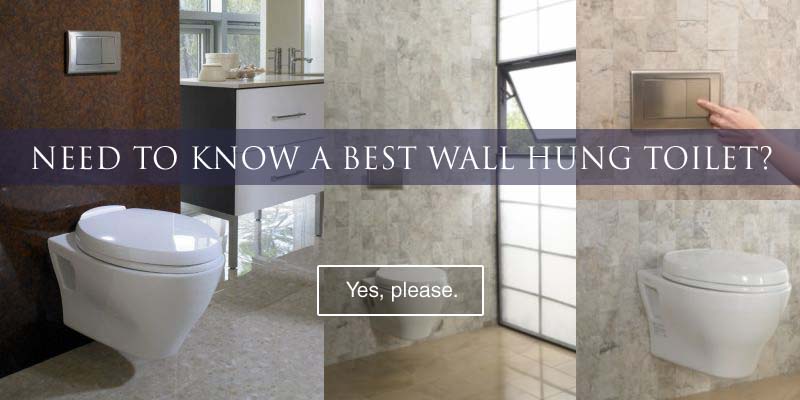


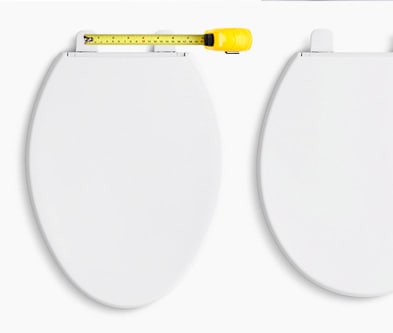
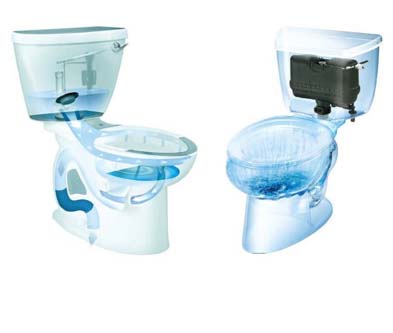

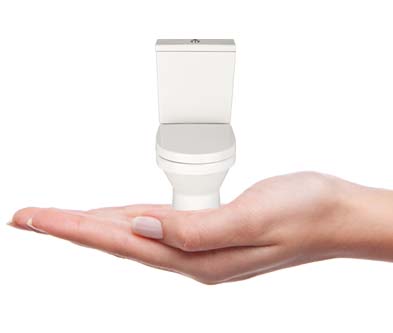
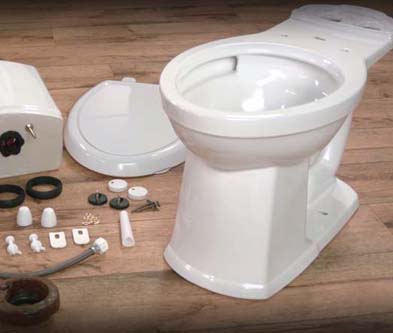
I would like a skirted bowl for style and easy cleaning, but it seems like all of the ones I am seeing are missing the best attributes you speak of here, i.e. higher gpf, map score, larger flush valve, better bowl design and glaze for a clean bowl, etc. Do you have any recommendations? A clean bowl is the most important thing, but I would like to not sacrifice style or ease of cleaning. Any suggestions? We bought an Icera Muse skirted for our other bathroom, but it doesn’t always deliver a clean bowl without an additional flush, which defeats the purpose of an efficient toilet in my book.
Hi Amber.
How about this Kohler Corbelle? https://toiletfound.com/kohler-corbelle-review/
Model K-3814 – Skirted, 3″ flush valve, 360° flushing, rimless bowl, MaP1000.
Martin
For all of you that are worried that your drain waste lines are not being cleared with you flush, I wouldn’t. Your faucets, showers and tubs all drain into those same lines and will certainly be assisting in moving your solids along.
I’ve been researching new toilets and found all of your topics pertinent, however, there is one topic that needs to be added, and probably given extreme emphasis. Nearly all toilets can flush items out, that is what they all do. What needs to be addressed is then moving the flush down the drain line to the septic system. It makes sense that a long flush pushes water down the drain line to keep things moving for a longer duration, which should equate to a longer length of transport of the flushed contents.
The new toilets that use less water have a 2-3 second flush time, which pushes the flush down the drain line for only 2-3 seconds. They accomplish this by using larger flushing valves. My old 2″ flush toilet has a 10-13 second flush, which keeps pushing material down the line for that amount of time. I would be willing to bet that my old 2″ flush valve is moving flushed contents further down the drain line than the 3+” flush valves on newer toilets.
Basically, the newer toilets are focusing on getting items out of the bowl at the expense of getting the entire flush out of the entire toilet+drain+septic system. Yes, the toilet bowl is empty, but, the contents may only be a short distance down the drain line, either piling up or waiting for the next dump of water to move them along. They have met the goal of clearing the toilet bowl, but, missed the objective of clearing the whole transport line.
Of course, this only matters if you have a long drain distance. What has not been discussed is how far the new toilets will move material down the line and how that is impactful on older homes that may have considerable distance from the toilet to the septic tank.
Hi Dave.
Excellent point there.
But if stubborn sticky waste on the bowl is a pain to rid of, what about along the unglazed drain pipe? So a pile-up is still possible over time regardless of flush duration. Perhaps it makes sense to do a bucket flush once or twice a week/month to dislodge any pile-up (hopefully) depending on how heavy the usage is. The onus is on the homeowner and drainage system designer when the septic tank is a distance away. Regular septic system maintenance and checks on the baffles is still the best policy to prevent a nasty plug.
Great article, gets into a lot of details without the reader losing interest. Only critique I have is dating the article so we know how recent it is. 🙂
I am a research freak and think all the information I have just read is outstanding. Thank you for clarifying and simplifying my choice for my new toilet. I have narrowed it down to two, now I just have to decide on design. Thanks again
You are most welcome Kathy.
Thank you so much for this useful analysis.
Thanks for all of your valuable advice. After days of researching, I could have just come here and gotten all the information I needed to know. Great article.
Hi Salome. Glad it helps.
I was wondering what are your thoughts on the class five flushing technology versus the AquaPiston flush valve.
Hi Wanda, thanks for asking.
My understanding of the class five system is the larger than normal flush valve opening of 3-1/4″. And the AquaPiston is just a component of the class five or class six….whatever. It’s just a KOHLER thing (marketing). I wouldn’t bother what classes is it. If a larger than 3″ opening is such a big deal, how about the 4″ valve by American Standard on its Champion 4 toilet? Whatever valve size that is claimed, it has to meet with the other design specifics like the trapway size, water channels, water surface and bowl glaze…etc to pull a decent flush. It may be able to clear everything in the bowl but leaving some bits and pieces on the wall because water from the rim holes didn’t quite get on to them. Does it matter if it’s class five or six then? I’d suggest don’t buy into that too much. If you read about some reviews, it seems nobody has a problem with clearing waste but getting a clean bowl is.
But having said that, I still love the AquaPiston over the flapper.
Hello, you have not talked about how pressure assist toilets fit into all of the options out there.
Hi Danell.
Pressure assist toilets are generally not as popular for residential use. Mainly because they are loud and replacement parts are not readily available. Unless there is a need for heavier usage, like public washroom, folks usually will settle for a regular flush. Also, not all manufacturers provide the option. Good point though.
Who knew there was so much to purchasing a new toilet?! Thanks for the clarification. I feel better equipped to make an informed decision. I am leaning towards a dual flush. Where were these when my 5 daughters still lived at home?!!
Hi Betty. Glad it helps. 🙂
Your article was extremely informative and easy to understand. Very helpful to us!
Thank you Starla. Glad you like it 🙂
probably the best thing I have ever read about the subject…thanks
Thanks Randy. 🙂
Martin
What a GREAT job you have done to clarify and simplify the job of empowering folks to purchase the best toilet for them — thanks so much!
Hi Charlene. You are most welcome. 🙂